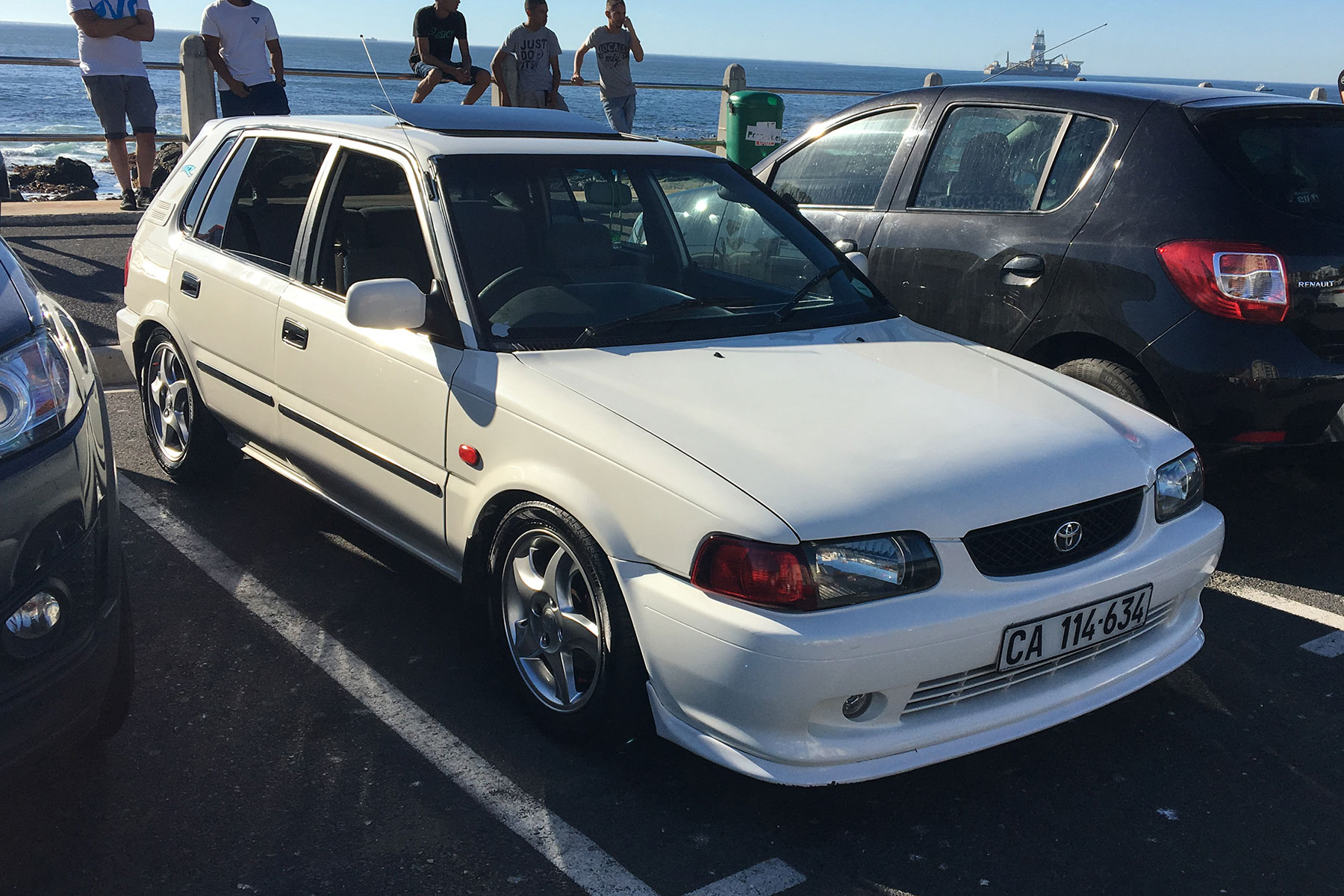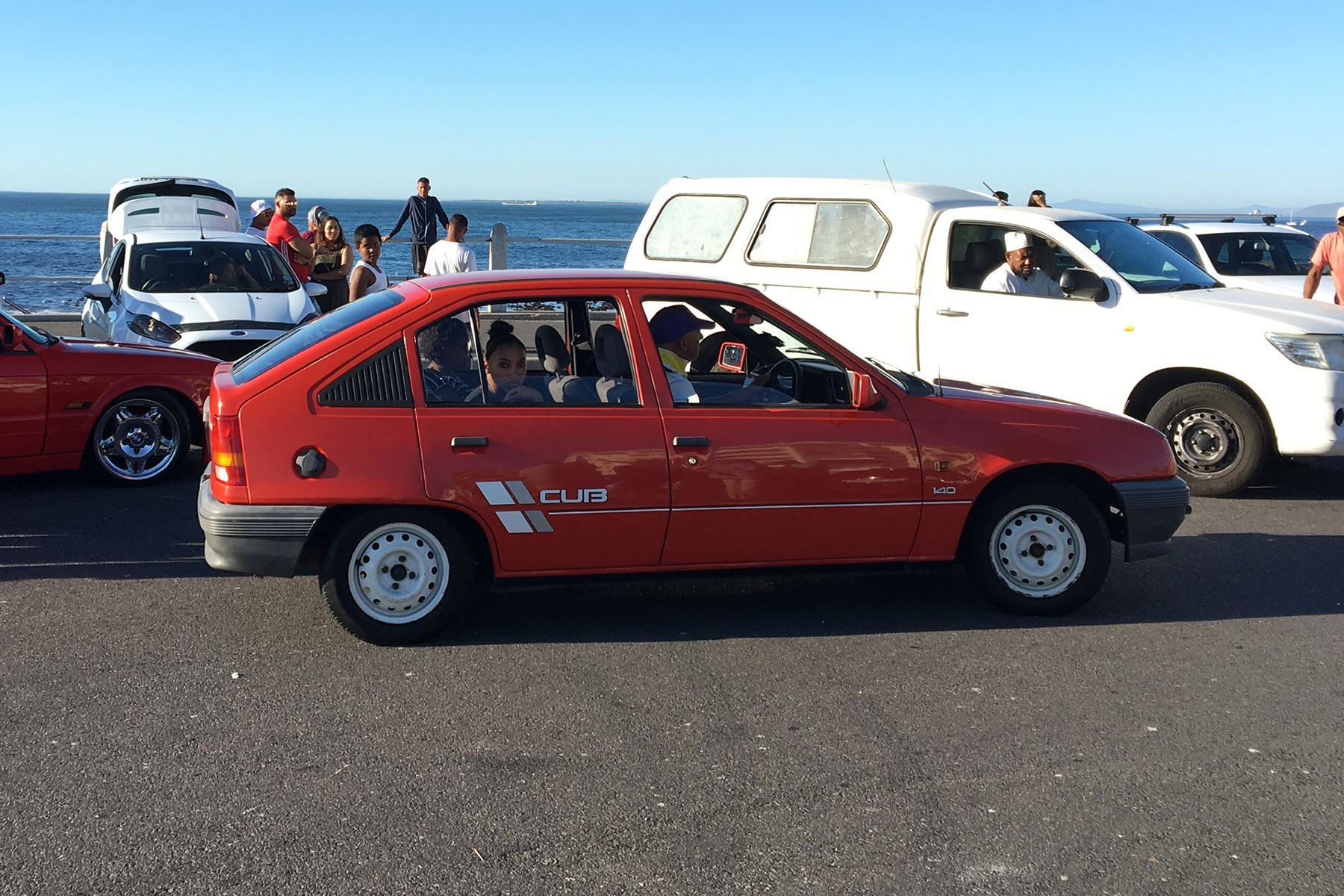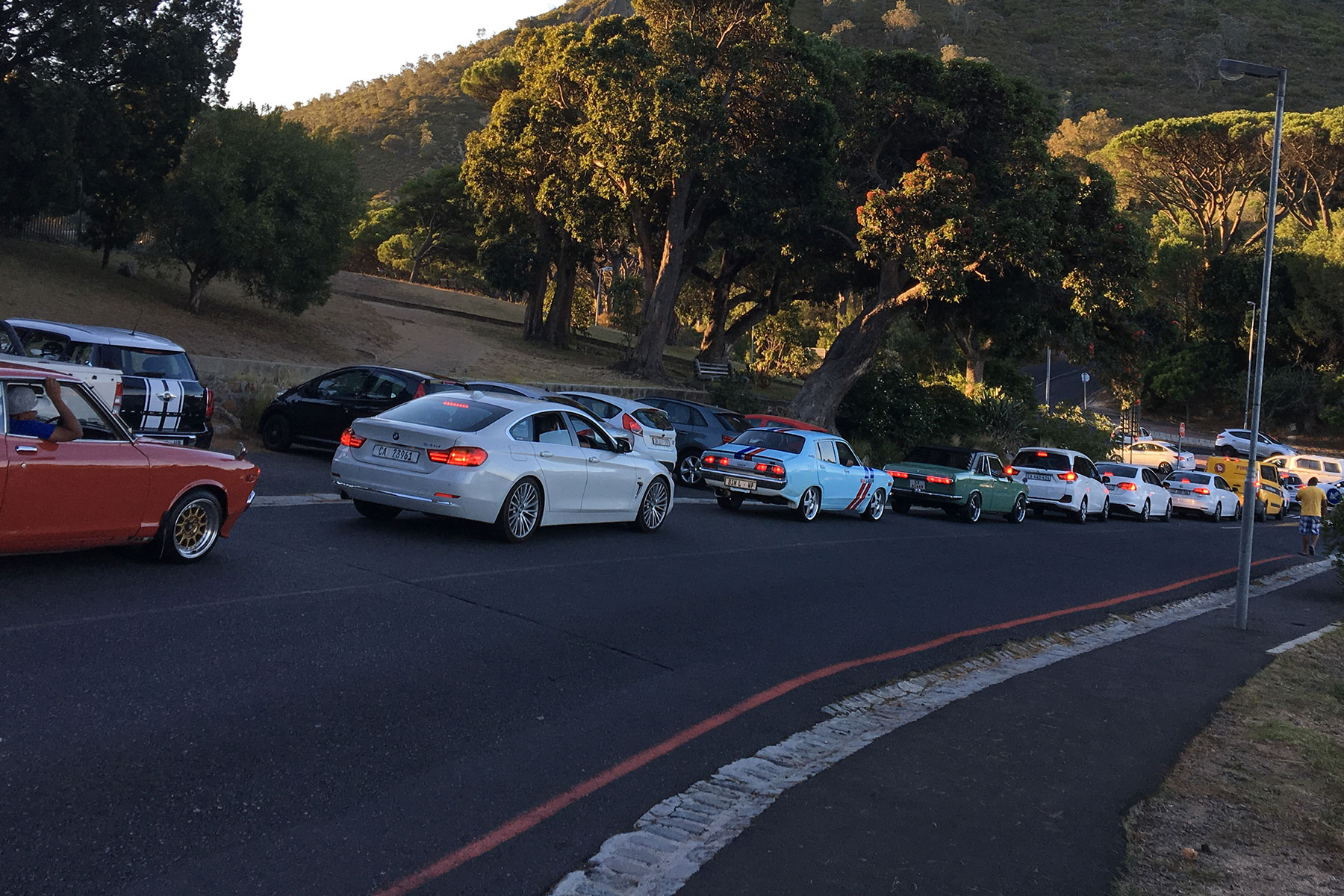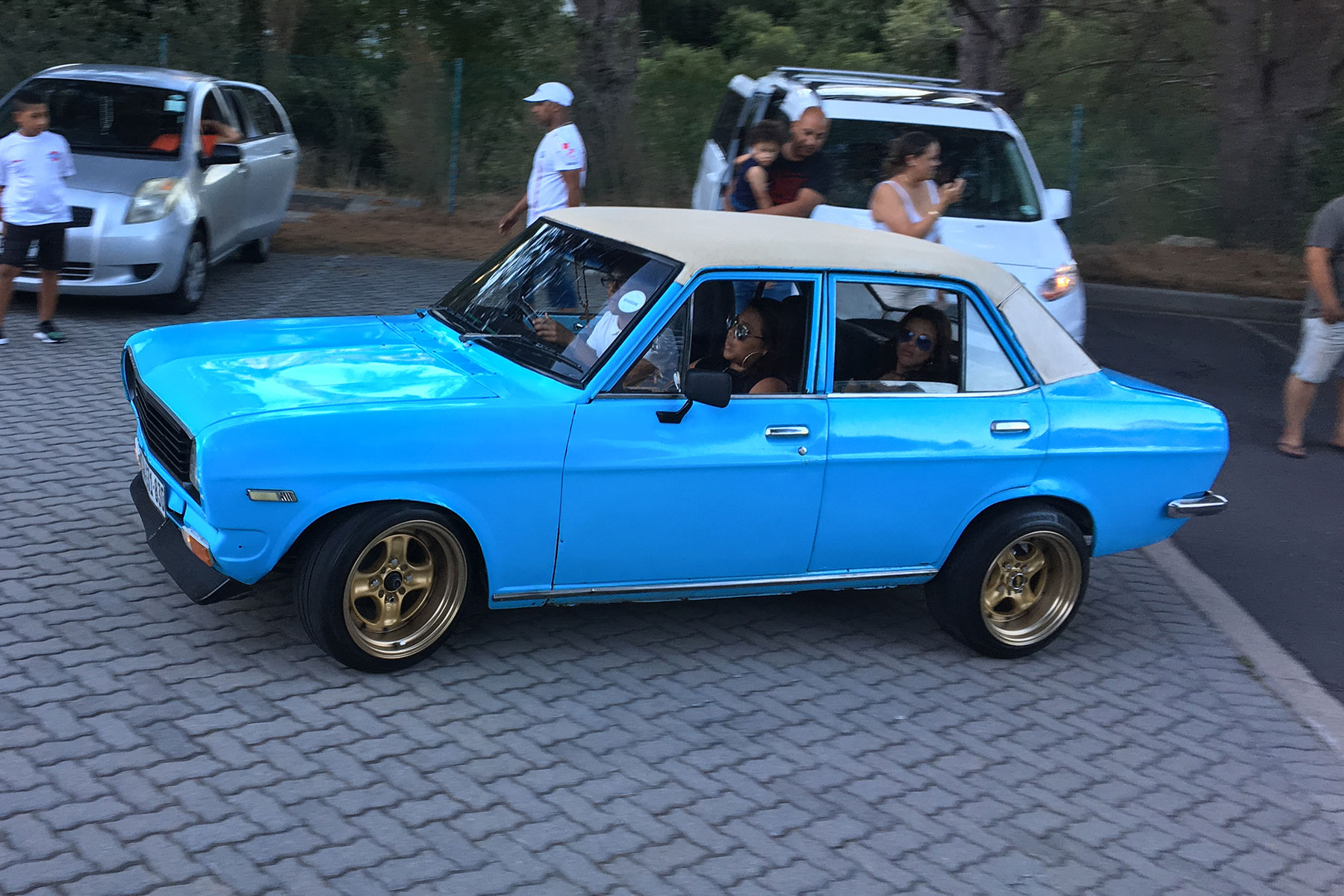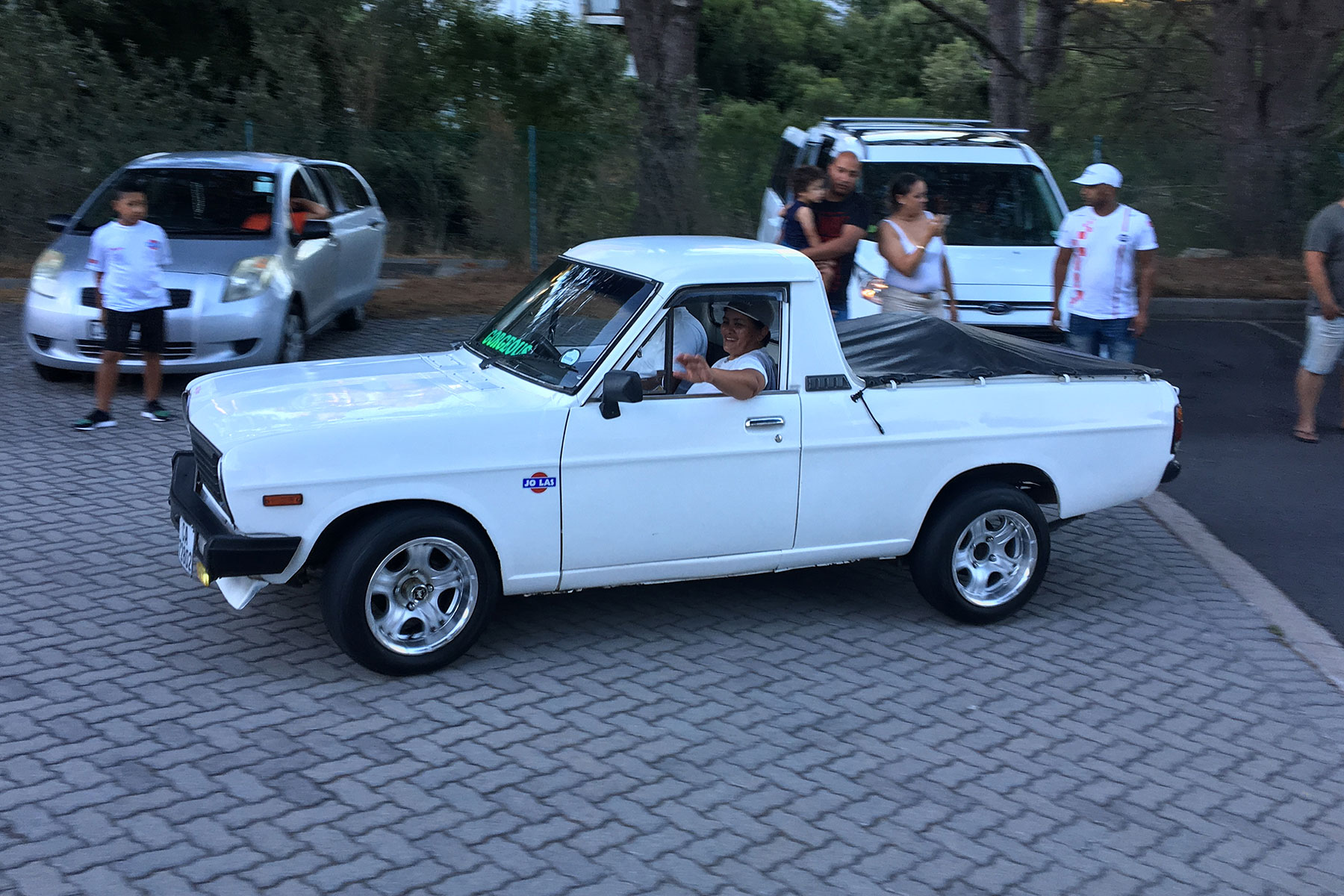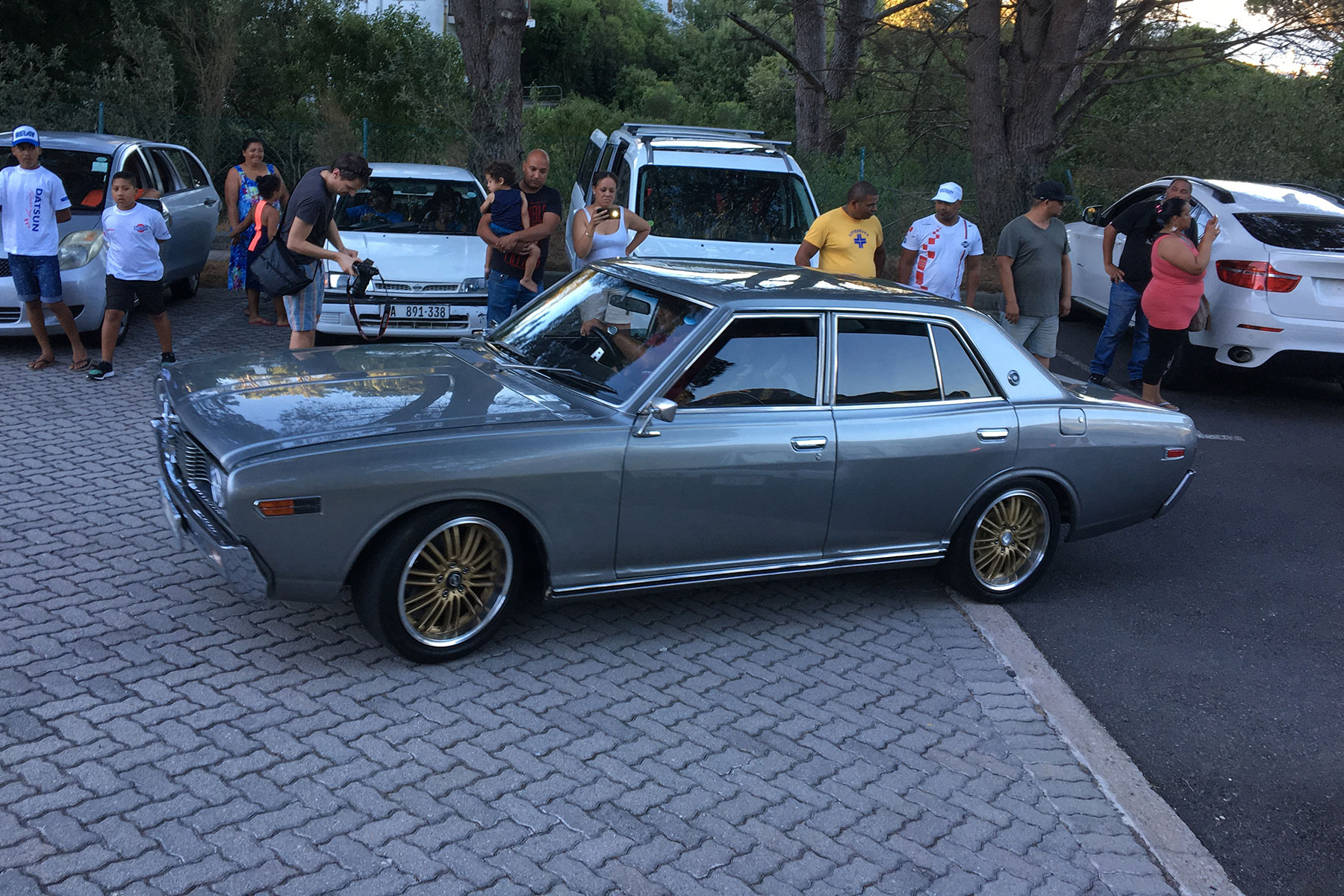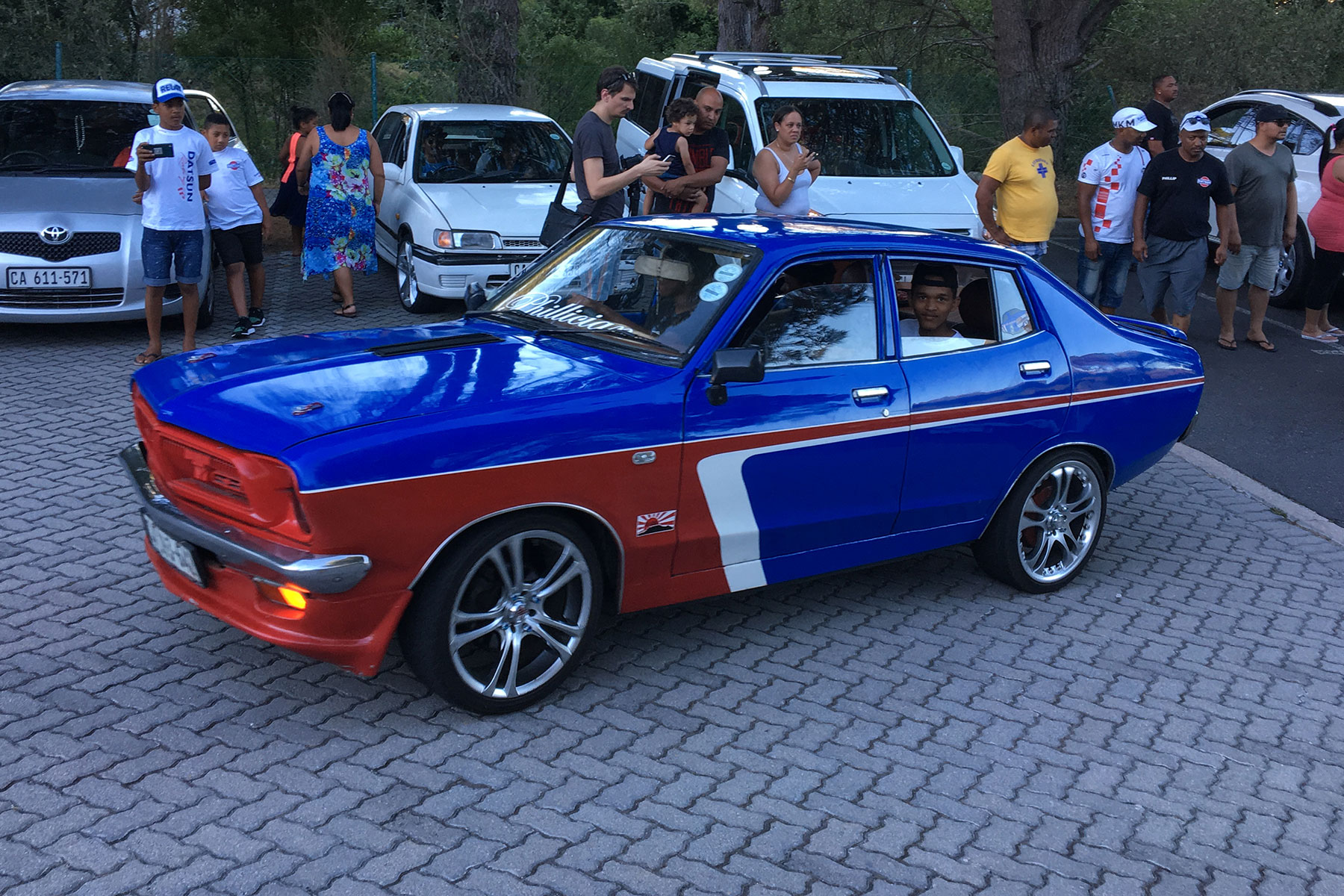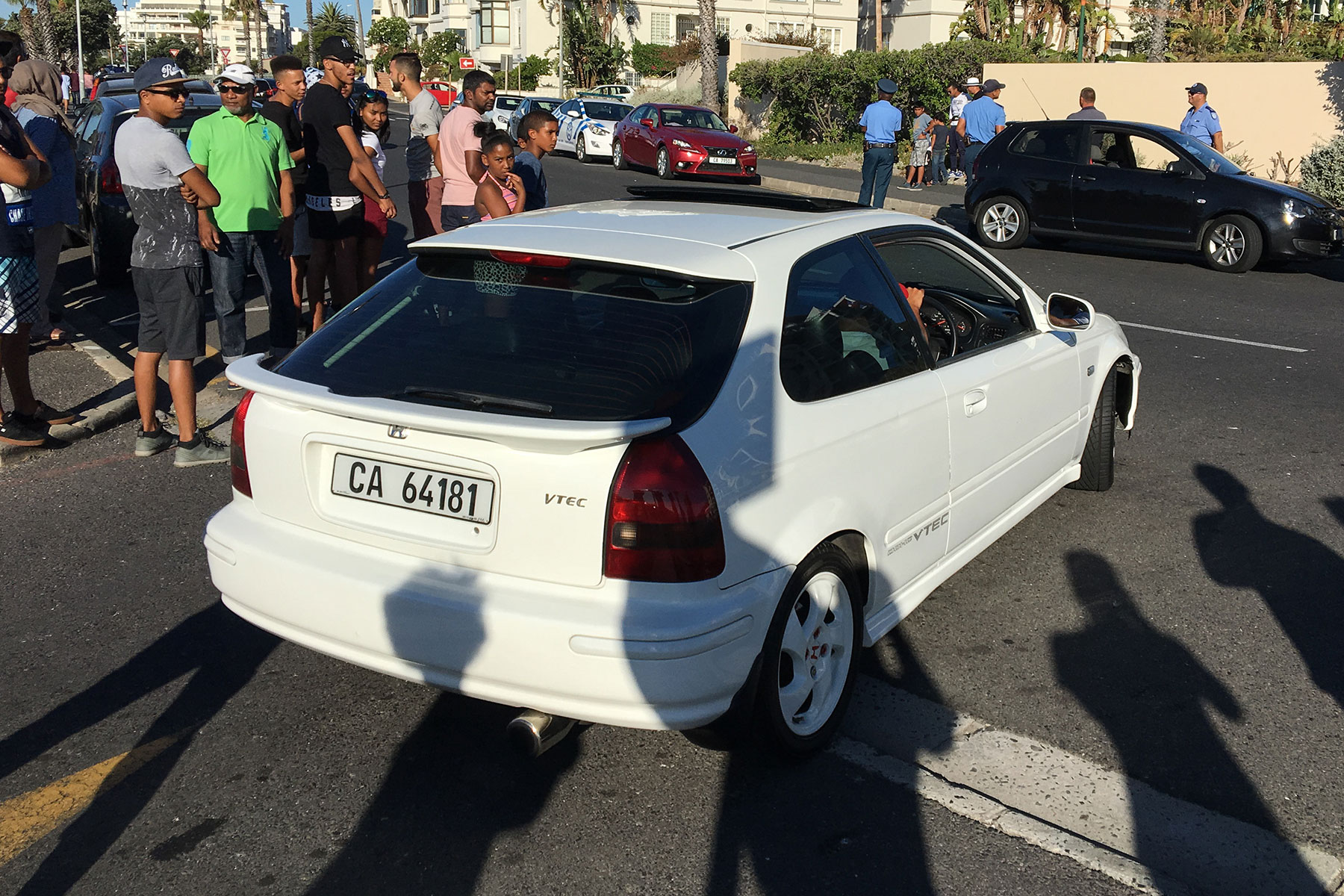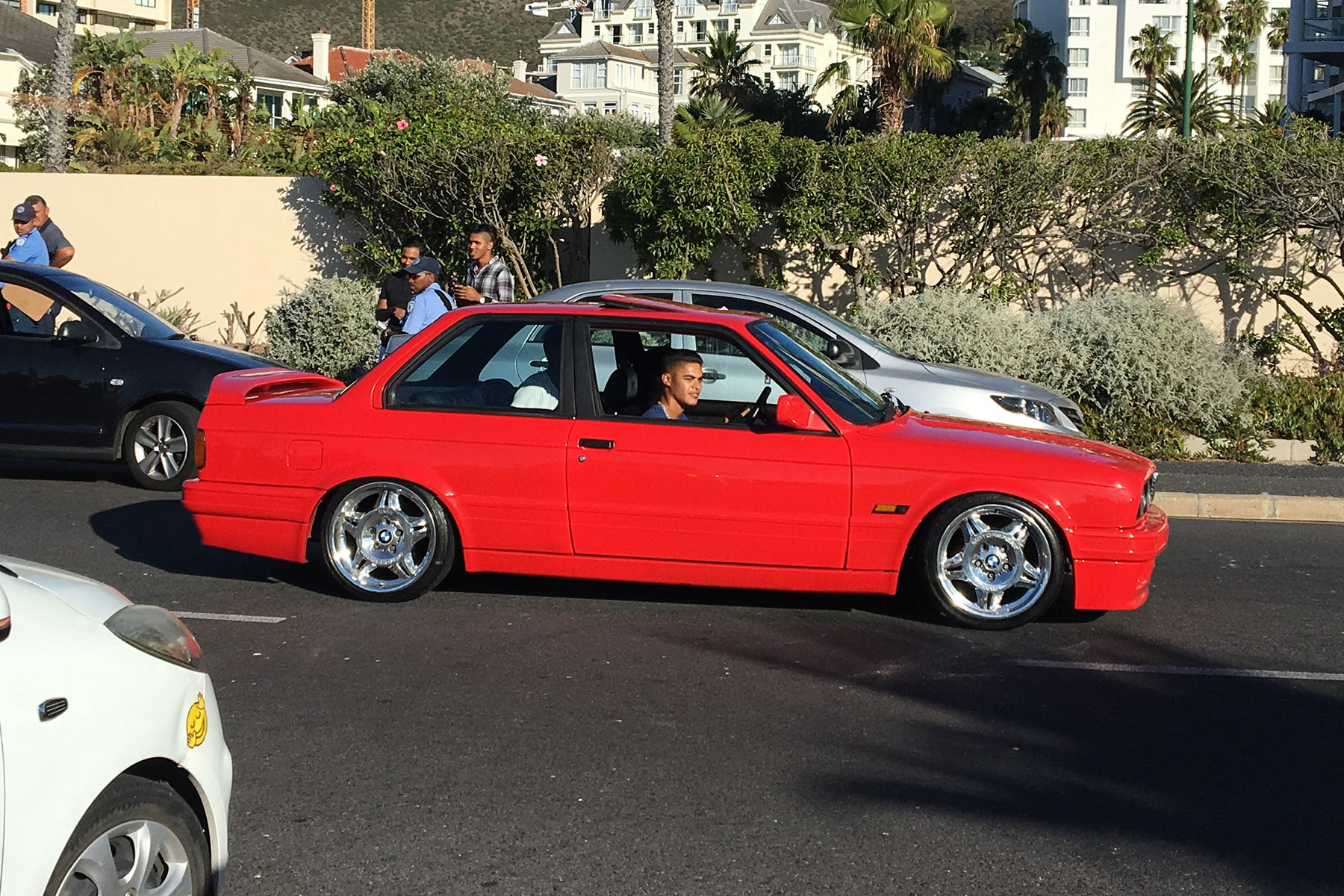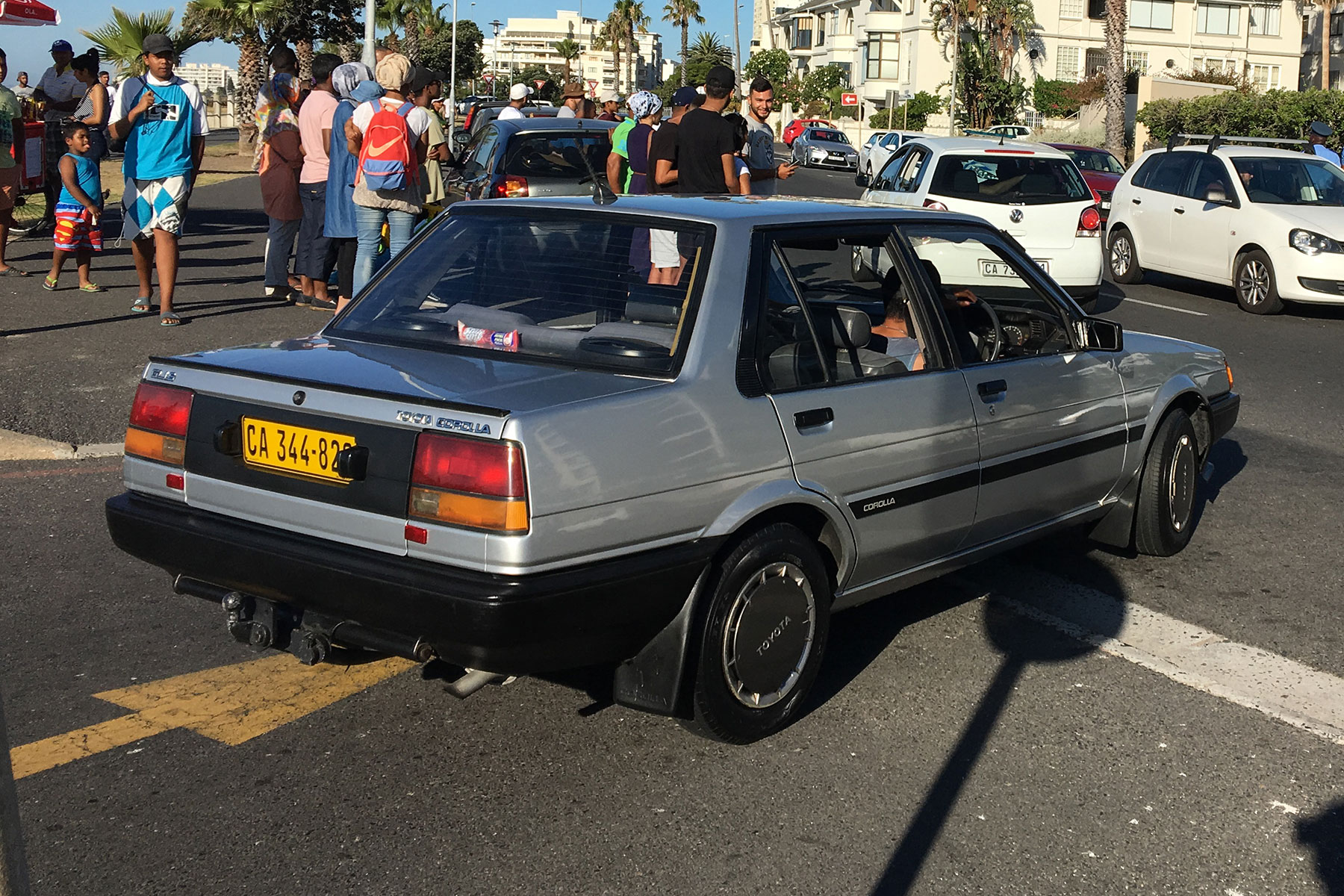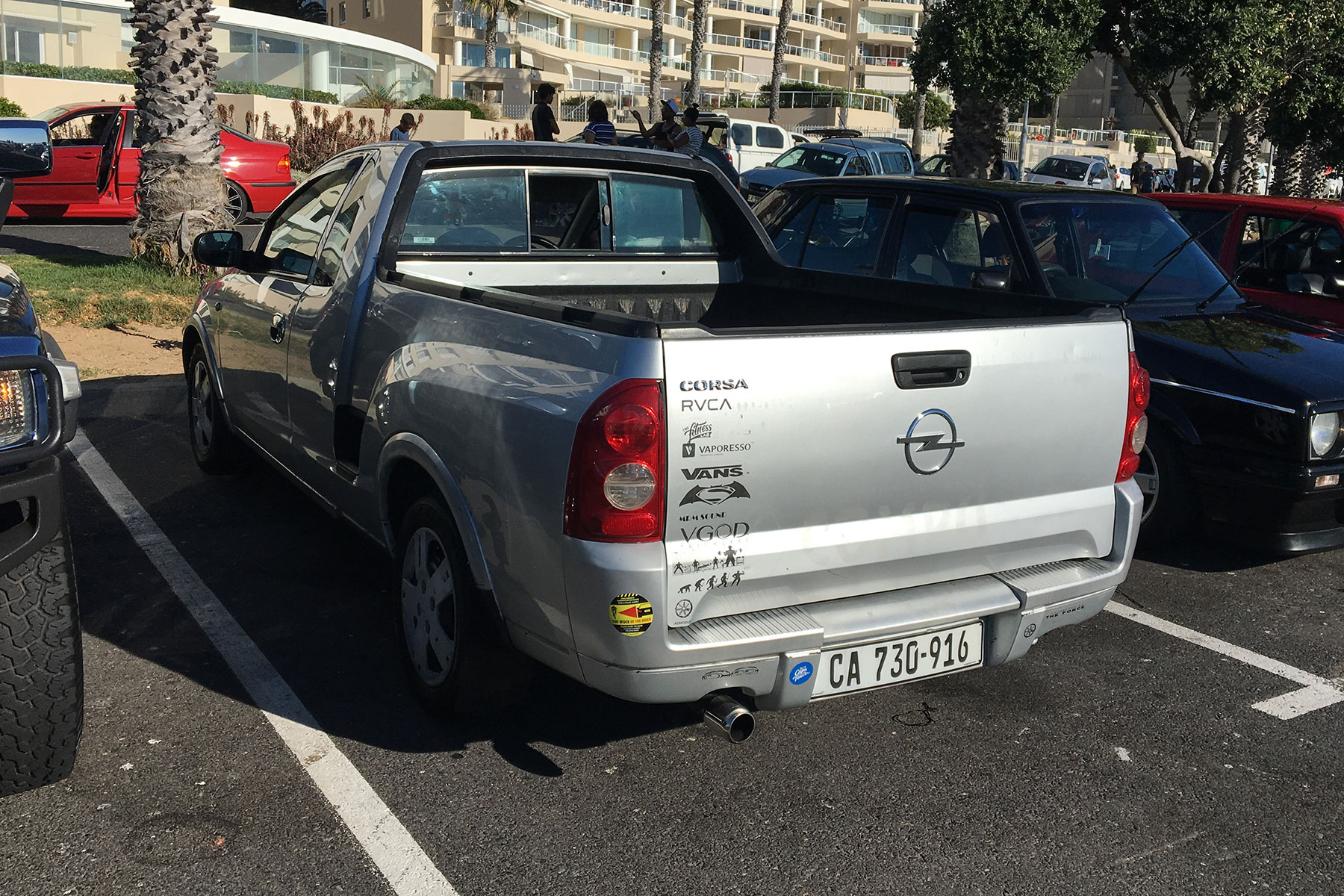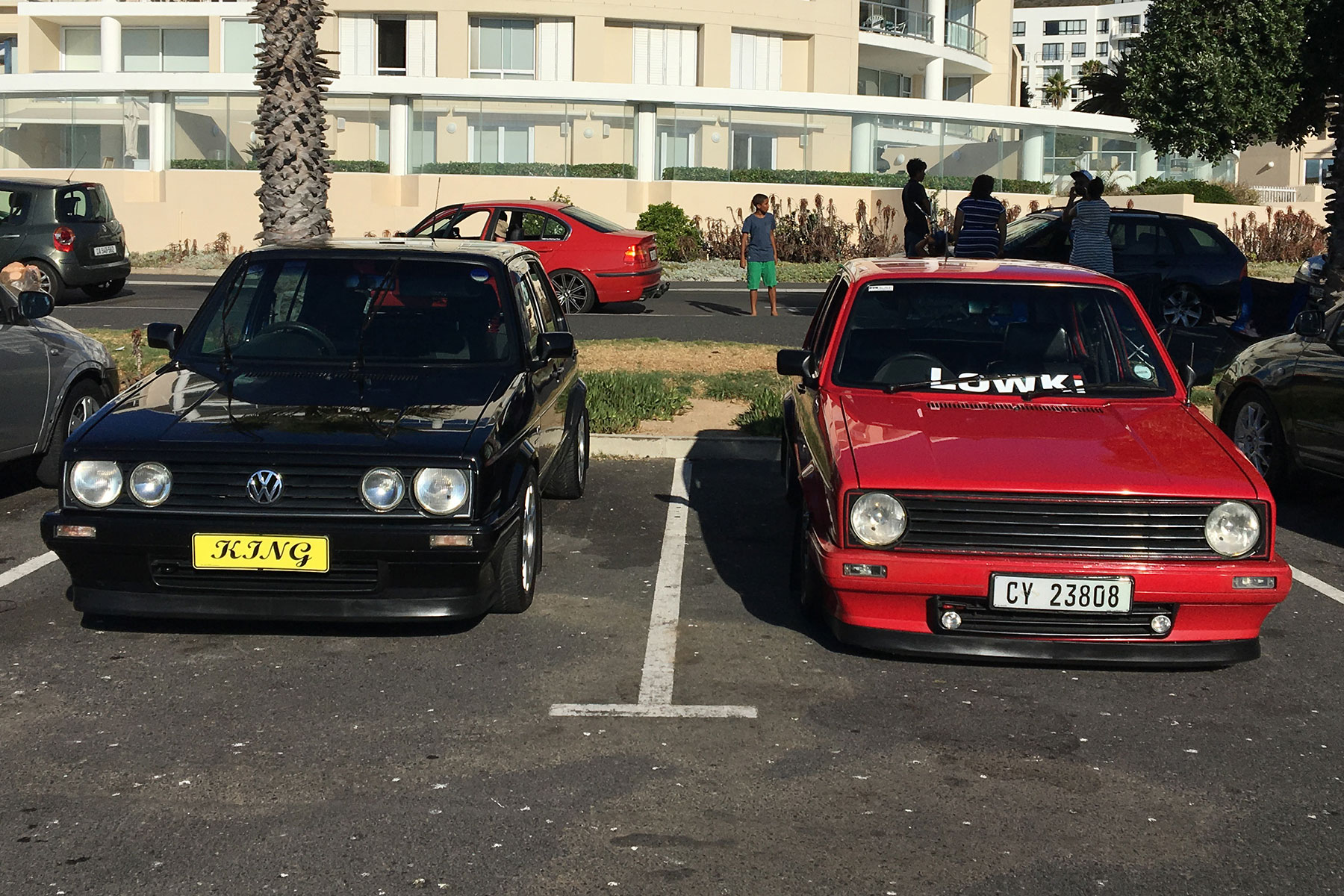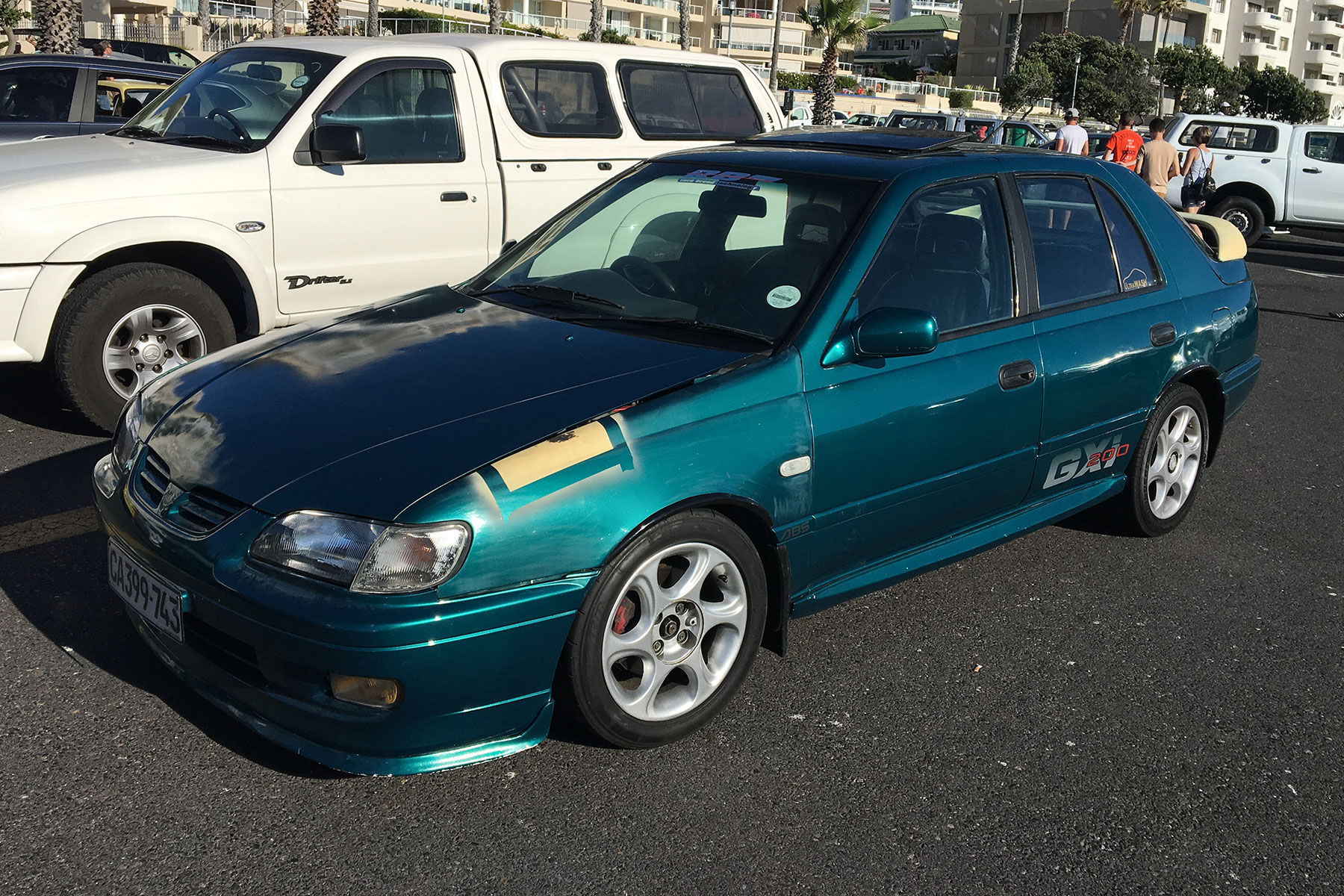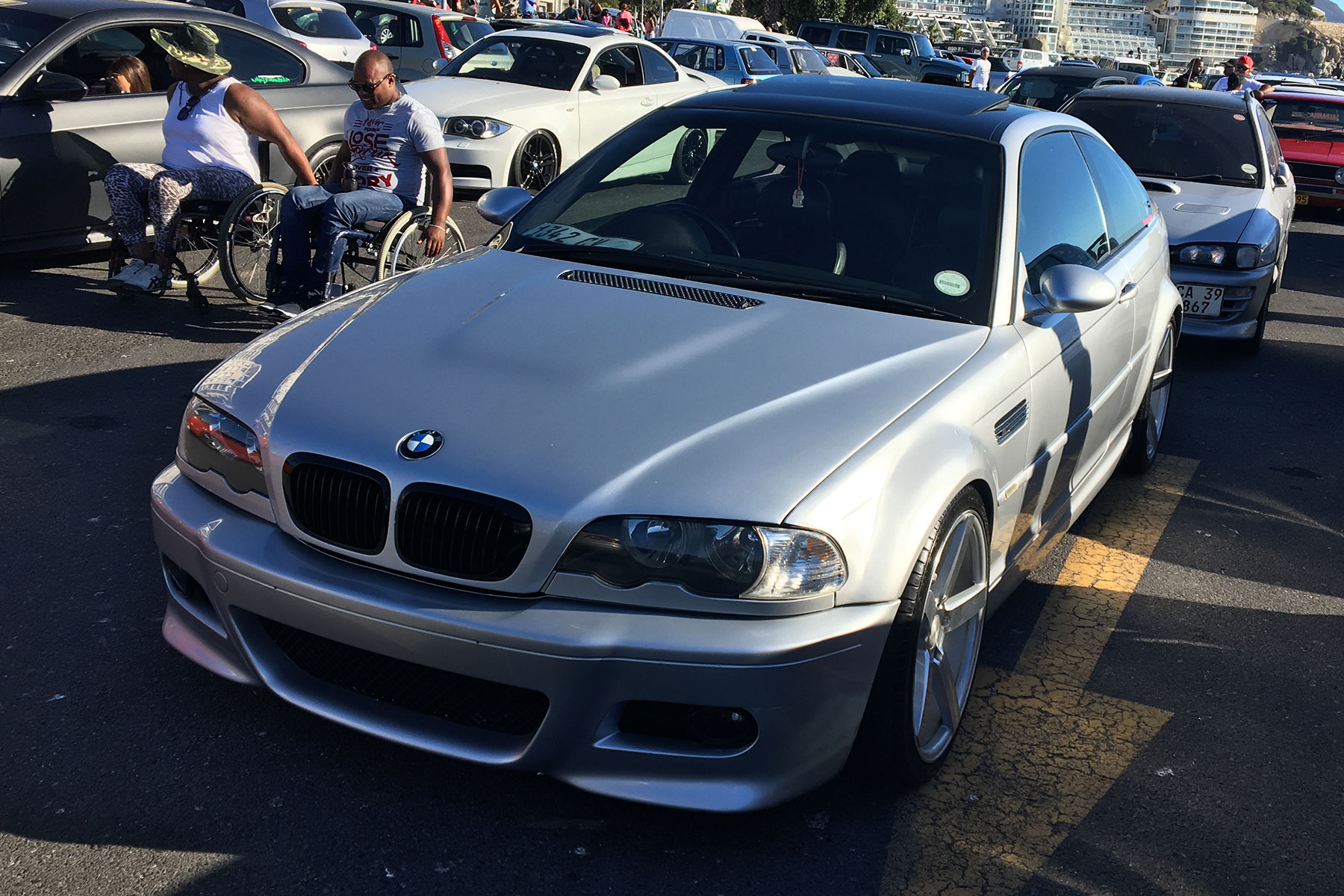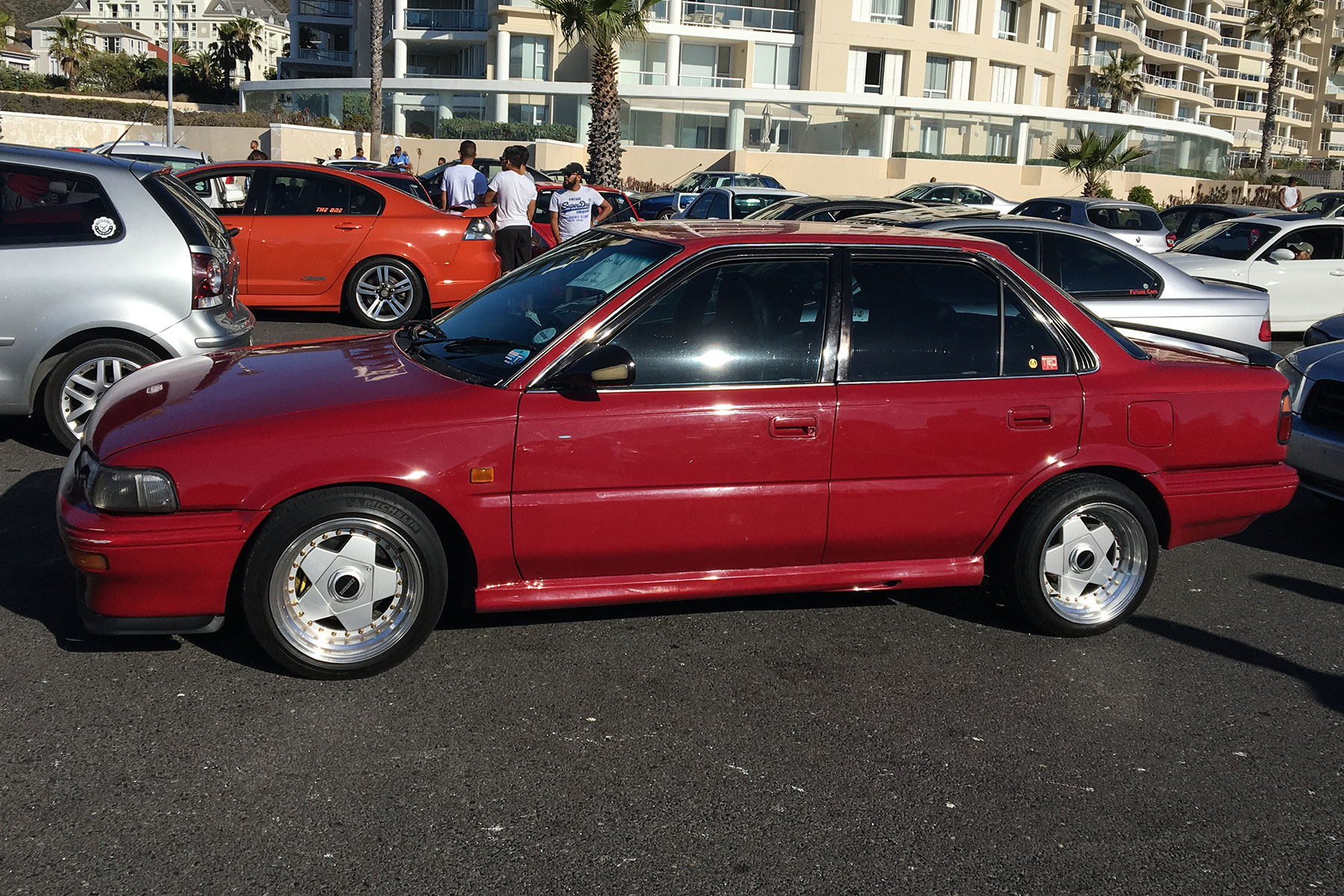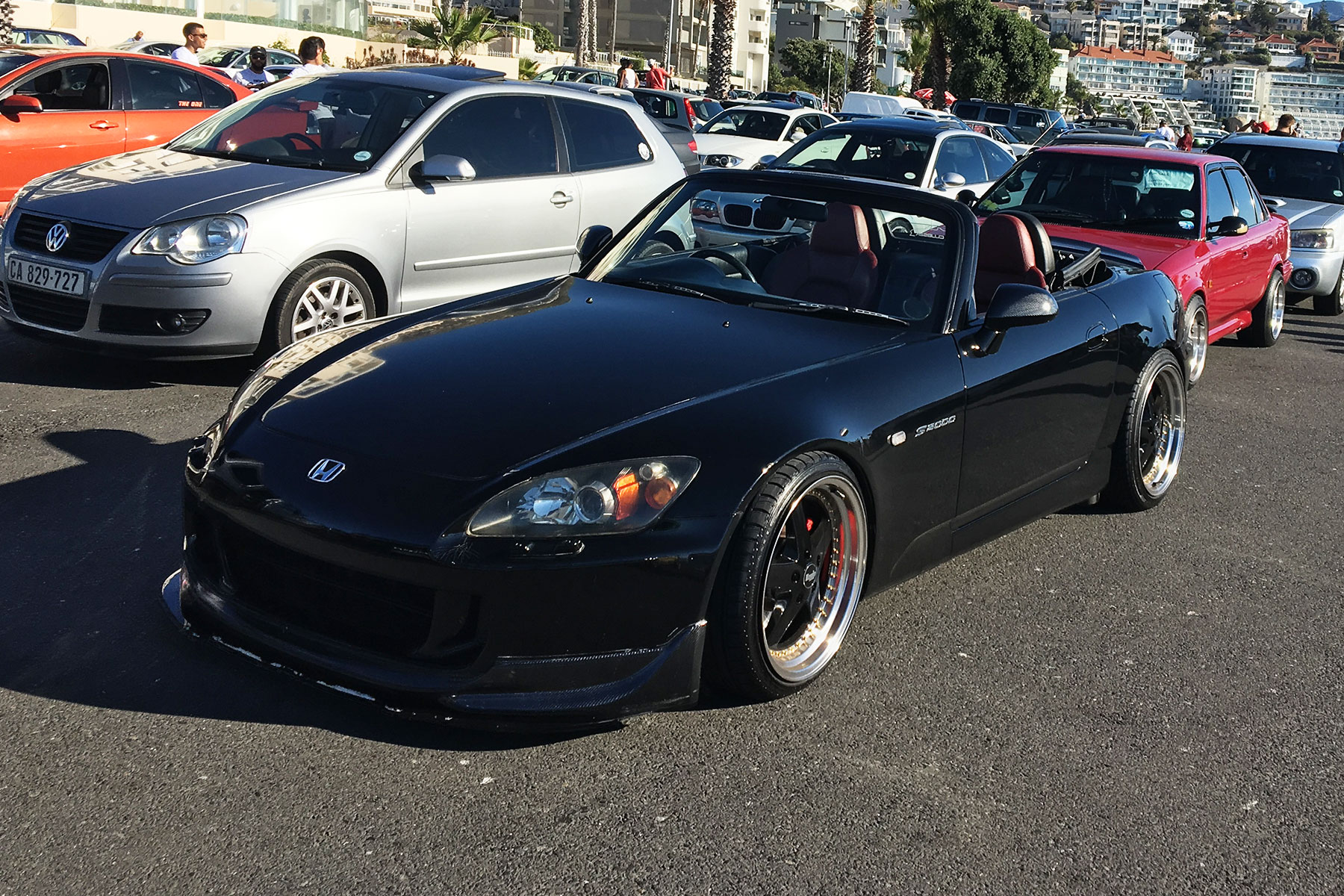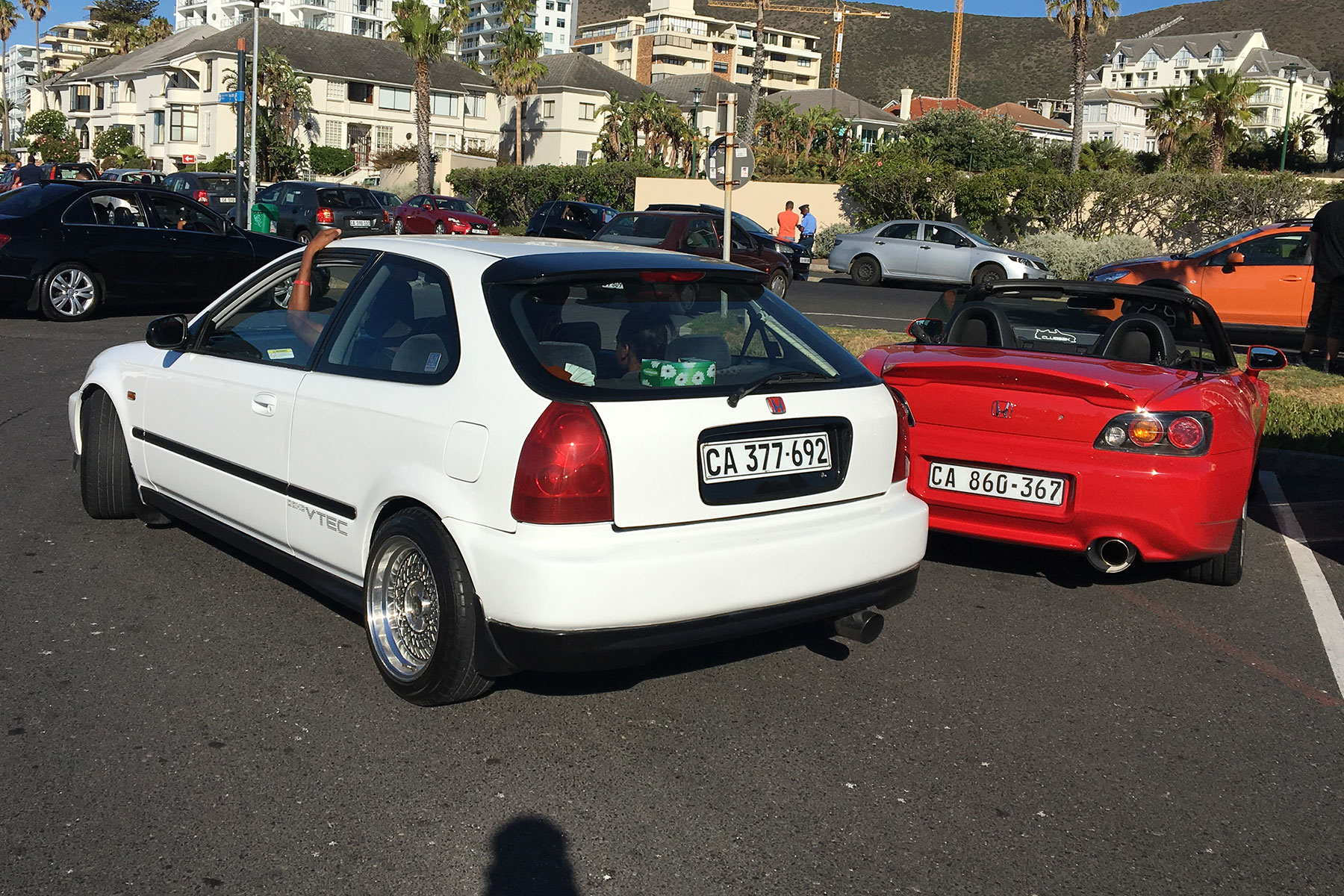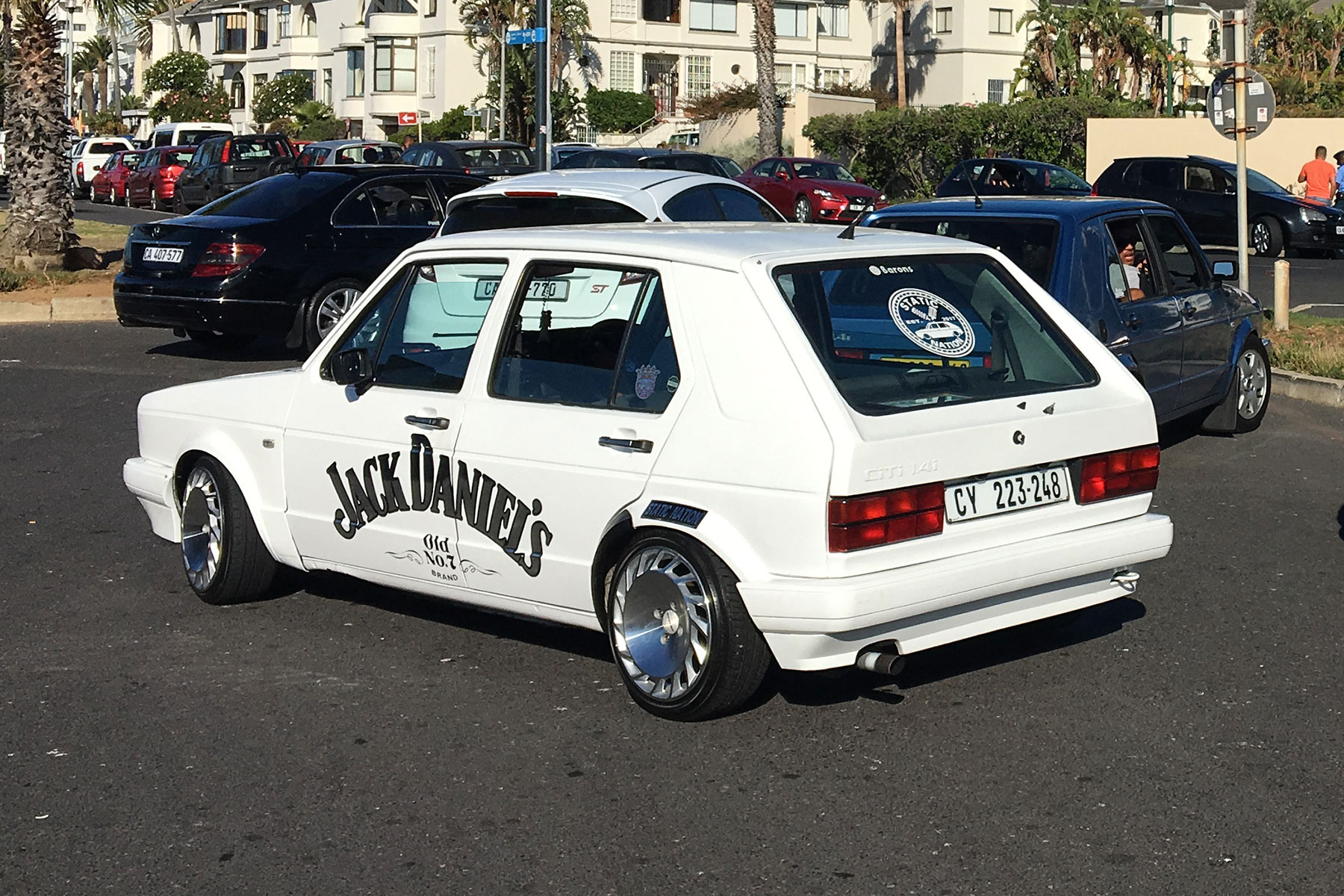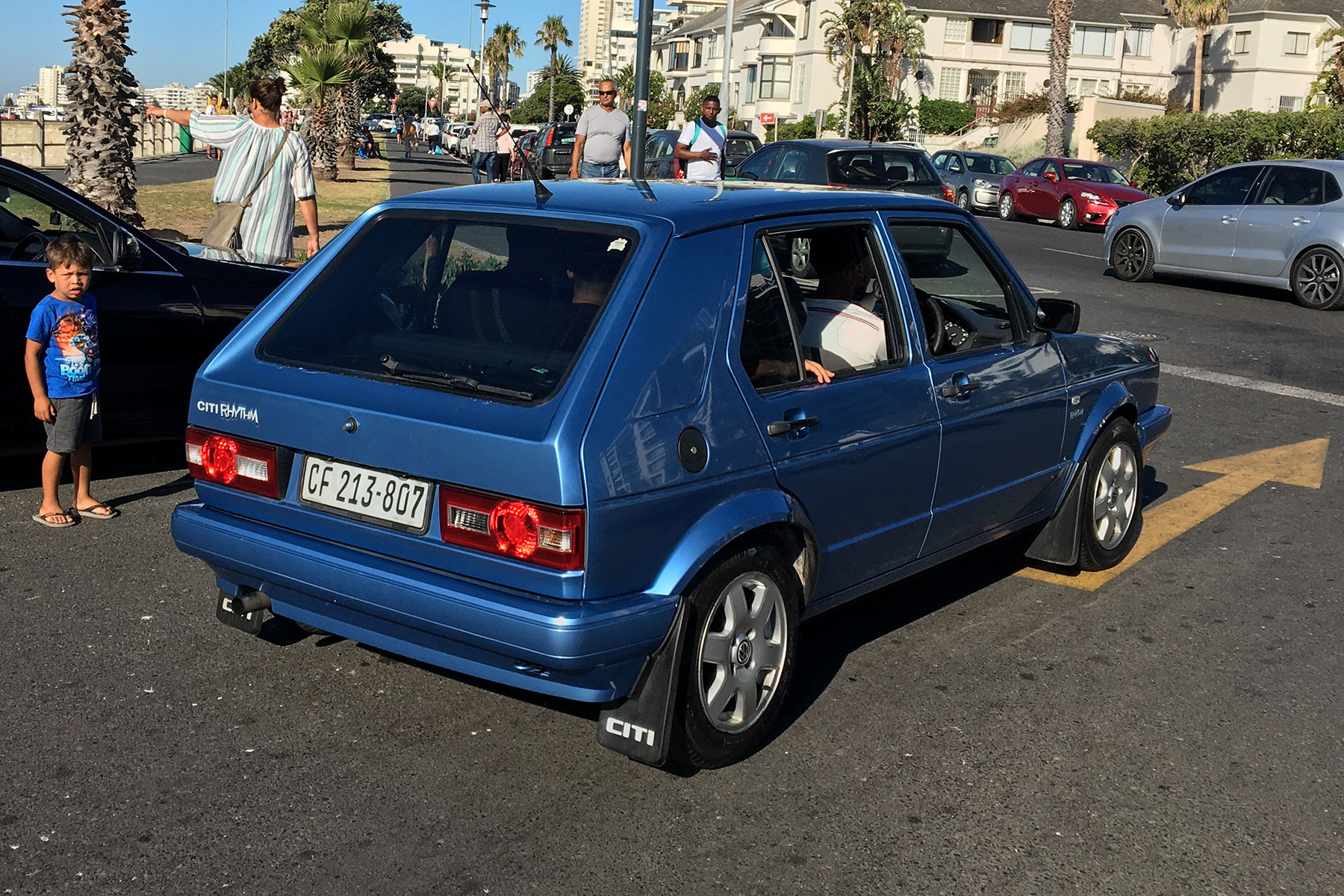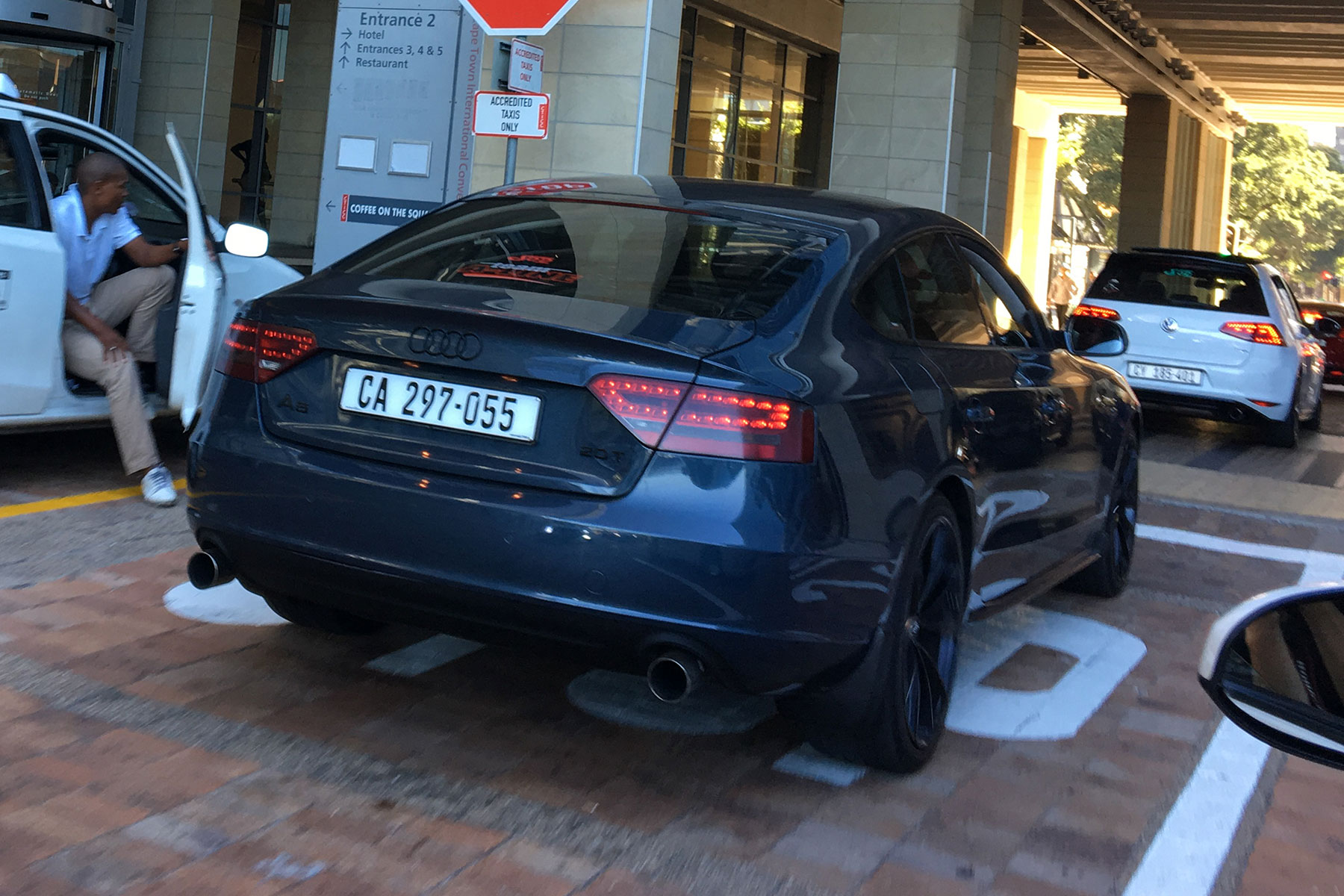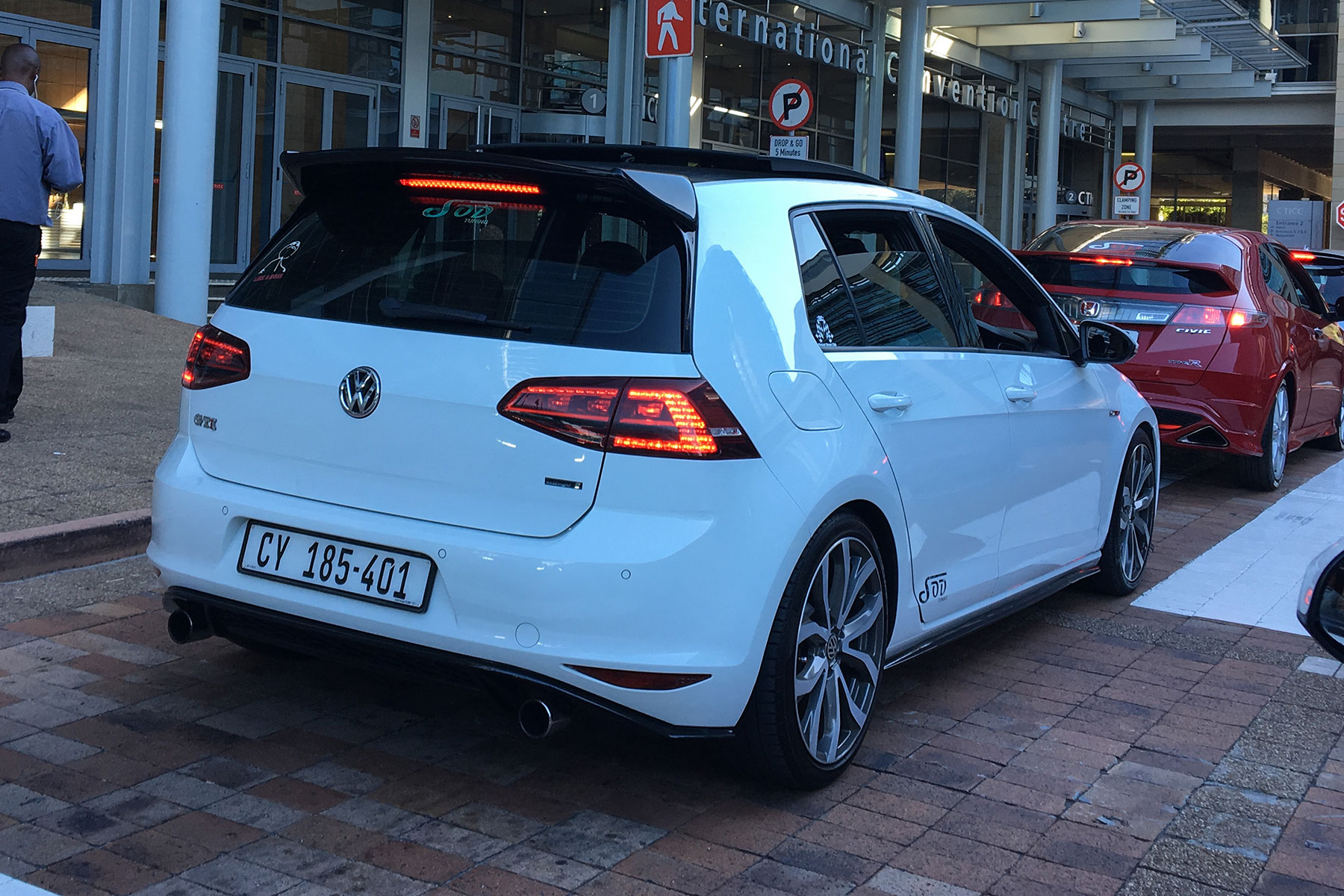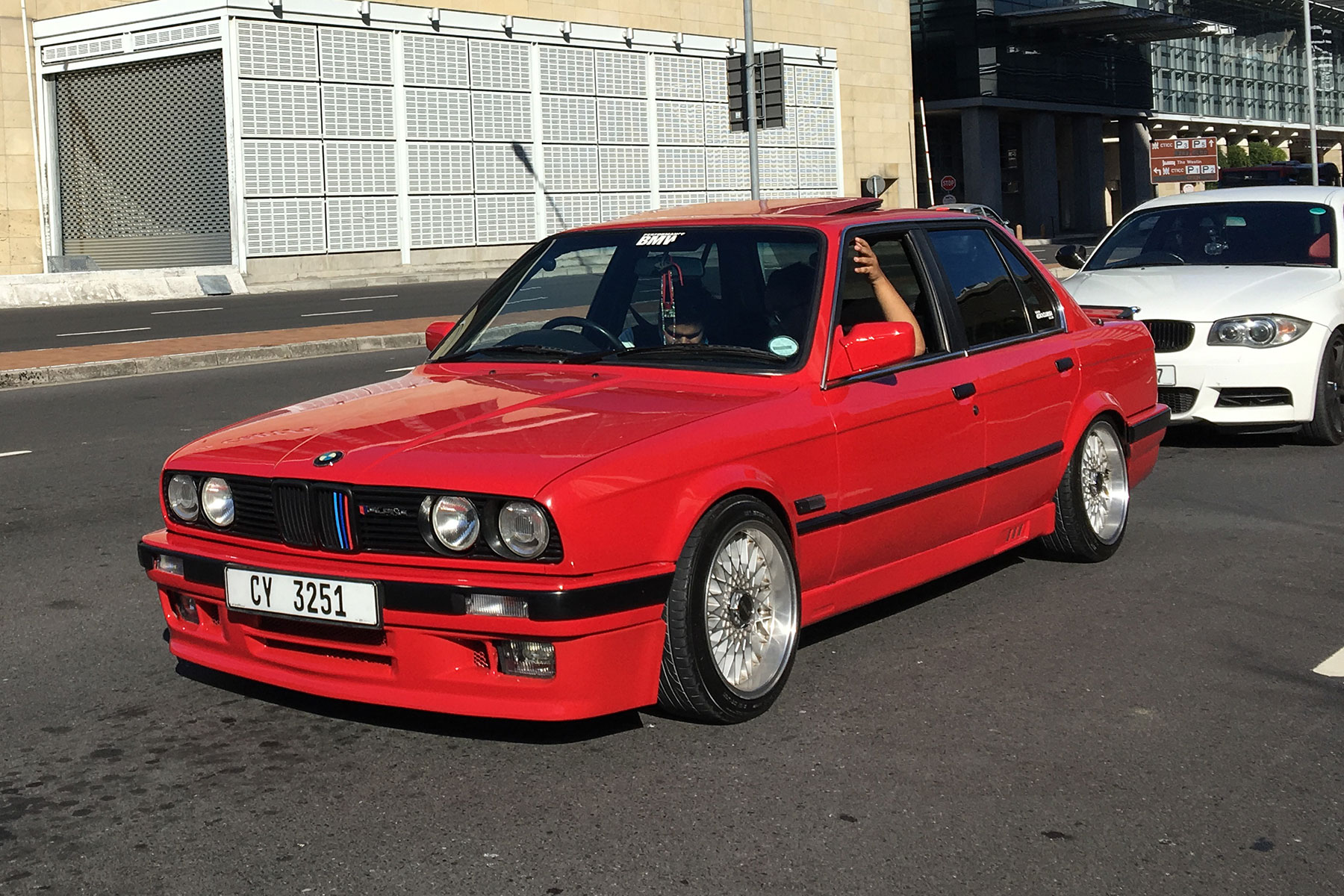
I’ve just arrived in the city of Cape Town. I’m in a Toyota Etios, surrounded by modified Honda Civics, old BMWs and the odd fast Ford. “Are you going to the same place as these guys,” asks our Uber driver. On replying that we are, he responds with “shall we get there before they do?”
And at that, he drops a cog and works the little 1.5-litre engine hard as he points the Etios at Cape Town’s back streets. Along the way, he tells me how much he loves the plucky little motor, while I crane my neck at the cars that we’re passing. Modifying is clearly a ‘thing’ in the Cape Town area – young drivers are keen to put their own stamp on their car in a way that seems to be dying out elsewhere.
When we get to the meet at a car park on the seafront, it’s clear that this ‘thing’ is something the local cops don’t necessarily approve of. Any modified vehicle is being stopped with tickets handed out for minor offences. One modified E30 BMW necessitates a senior officer with a clipboard. He’s there a while.
What’s impressive is the variety on display. Old Toyotas are popular, as are Volkswagens. But there’s weirder stuff, too: a slammed Micra, a Hyundai i10 on deep dish rims, a modern VW Polo all but standard apart from a dixie horn (I only know it has a dixie horn because the driver beeps at the officer holding traffic up and promptly earns herself a ticket).
There’s an obvious divide between the rich and the poor in South Africa and – while I wouldn’t want to suggest that the car scene reflects that (most of the poor can barely afford a house, never mind a modified car) – it does at least mimic the state of the country. Just as the slum neighbourhoods border well-to-do gated estates, someone’s pride-and-joy Opel Kadett (Vauxhall Astra to you and I) is parked next to a C63 AMG.
It’s not long before the police kill the party spirit, so it’s time to head elsewhere. We jump in another Uber (sorry, local taxi drivers) and head to a must-visit tourist attraction: Table Mountain. Having been dropped off at the bottom of the hill, a classic Datsun is spied descending into a hidden car park. We follow for a closer look, and find more than 30 similar models parked up. Initially, their owners (members of the All About Datsun Facebook group, I later discover) treat us with suspicion – we have just turned up at their hidden meet out-of-the-blue and started taking pics, but after a brief chat they’re happy to show off their vehicles.
Unfortunately the event is over as quickly as we discovered it. Of course, watching the cars leaving is quite the spectacle – models that either were never sold in the UK or disintegrated within a few years of arriving are on display with a variety of modifications. Their owners, of course, are also willing to burn some rubber – as much as ancient Datsuns with open differentials can, anyway.
One-wheel burnout ftw. pic.twitter.com/n24Jqc7Umz
— Andrew Brady (@TheAndrewBrady) January 30, 2018
This is a city that loves cars. Stumbling across two car meets within hours of arriving is evidence of that, while there are weird and wacky creations cruising up and down the streets 24 hours a day. The best thing, though, is the respect from the majority of the public, no matter what you drive. There’s very little in the way of snobbery: people were happy to stop an admire cars at both the meets I visited, whether the car in question was an old Datsun or something European and therefore seen as exotic.
As car modification seems to be long out of fashion in the UK – whether that’s because of restrictive insurance, a downturn in car ownership or just a plain simple lack of interest – I can’t help but be a smidgen jealous of Cape Town’s thriving car scene.

